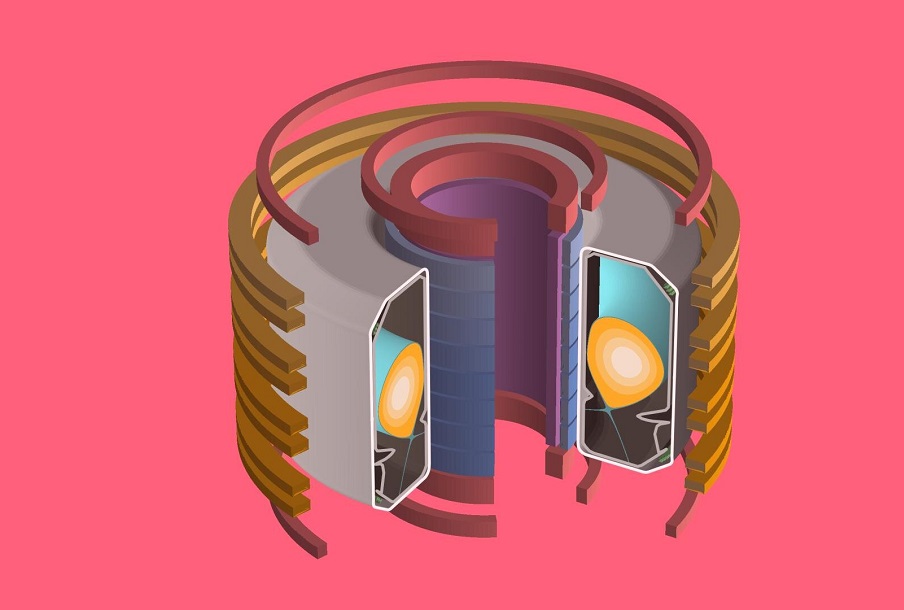Swiss physicists and DeepMind have developed a fusion process controlled by artificial intelligence. Perhaps it is this combination of technologies that will give impetus to a more active exploration of the Solar System.

Artificial intelligence will help physicists
The Federal Polytechnic School of Lausanne (EFPL), together with DeepMind, announced the beginning of the development of a fusion reactor fully controlled by artificial intelligence. Swiss scientists hope that their experience will be combined with the innovative approach of the Google-based project.
DeepMind experts used the results of 20 years of research to teach their artificial intelligence to control fusion. This is similar to how a neural network learns to play chess in the games of grandmasters, and then defeats them.
At first, artificial intelligence demonstrated its skills on a simulator. Then it was connected to the TCV, and it controlled the reactor in several different modes, including magnetic field retention of two types of plasma in one chamber. EFPL specialists are very pleased with the result and hope that the created system will allow them to finally get a controlled fusion reaction. DeepMind is also happy to be able to connect a neural network to solve problems that people cannot do.
Fusion reactors for space
The creation of efficient fusion reactors is extremely important for space exploration. Tests of ion and plasma rocket engines capable of accelerating the spacecraft to speeds of tens and hundreds of kilometers per second are in full swing. But they need a lot of energy to accelerate the working body that creates thrust. While we are talking about automatic probes weighing hundreds of kilograms, this is not so important. But the main purpose of creating such engines is a manned flight to the outer planets. And there only the spacecraft’s habitable module can weigh tens of tons. The engine power in this case should reach tens of megawatts, and traditional means of obtaining energy for modern cosmonautics cannot give such an amount of it. For example, the area of solar panels for this should be measured in square kilometers, but it does not matter: after all, the farther away from the Sun, the less effective they will be.
A full-fledged reactor needs to be installed on the spacecraft, and it is better that it be fusion. The energy sources we are familiar with, working on radioactive decay, are less powerful and produce a large amount of waste that simply has nowhere to go in space so as not to “dirty” it.
Neural network will carry out a controlled reaction
The main problem of a controlled fusion reaction is that engineers have not been able to carry it out for 70 years. Now we have come as close as possible to its implementation, but this is done mainly by brute force. The fusion reactors on which it is approached end-to-end are large and powerful. They are of little use for a spacecraft.
The approach of EFPL and DeepMind looks more successful. If the magnetic fields and plasma in the reactor can be controlled more subtly, then it will be possible to make it smaller. Of course, if it matters at all. We still don’t know why we can’t get energy from plasma. Maybe artificial intelligence will figure it out.
Will artificial intelligence control the spacecraft?
One of the most interesting questions that arises in connection with the experiments of Swiss physicists is what else can we entrust to artificial intelligence? After all, if we trust it to control a fusion reactor, which we cannot control ourselves, then why not trust the engine powered by this reactor?
Artificial intelligence controlling a spacecraft can provide huge advantages, for example, in collision avoidance. The problem of space debris is solved so far by the fact that the trajectory of each piece is calculated by observers on Earth in advance. But its number is growing.
Dodging an unexpected danger is not so difficult. To do this, you just need to make the right decision very quickly. But a person may not be able to do it. And from this only one step to artificial intelligence, calculating the optimal trajectory for the spacecraft. And the only question is why a person is needed on board in this case.
According to phys.org
Follow us on Twitter to get the most interesting space news in time
https://twitter.com/ust_magazine
